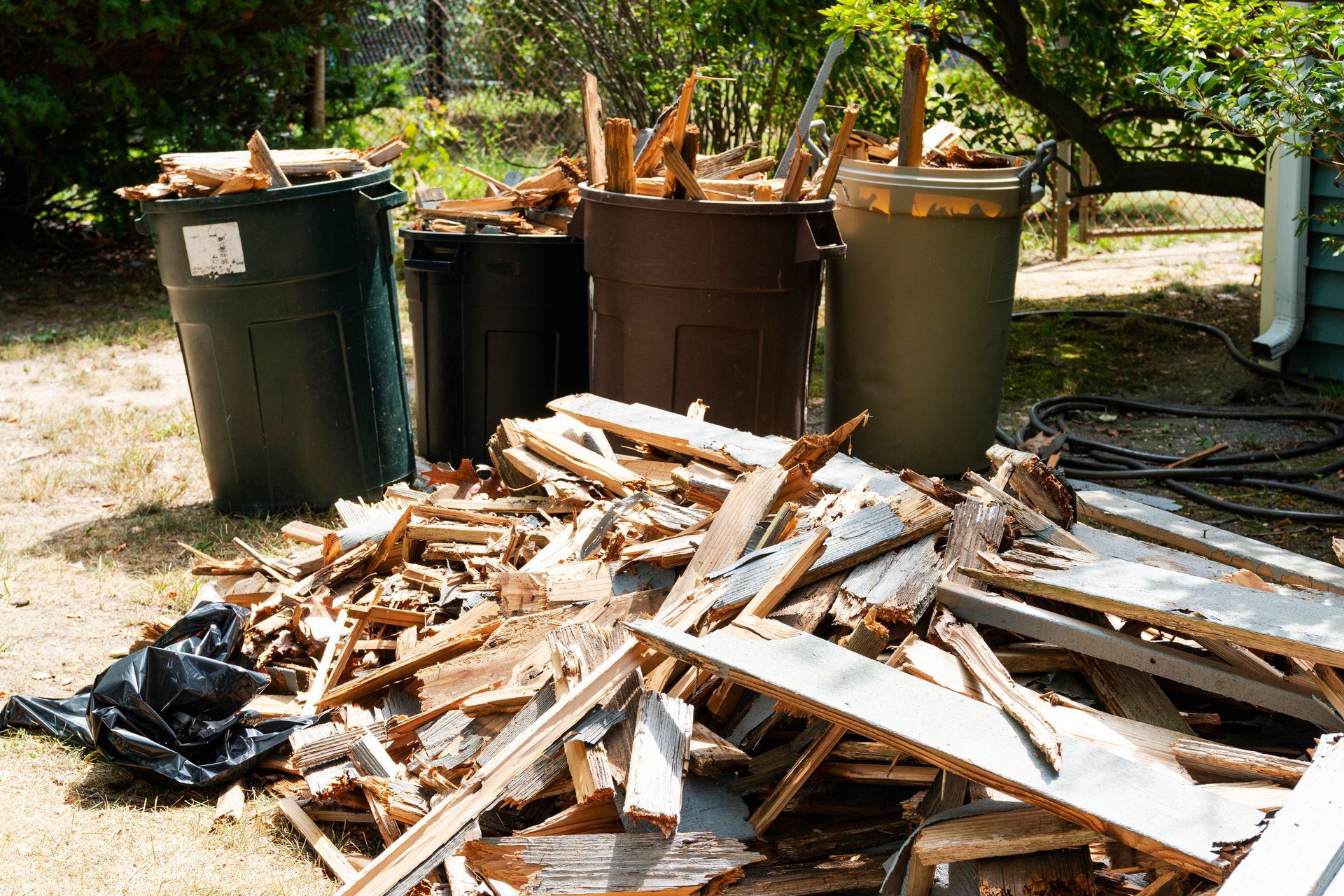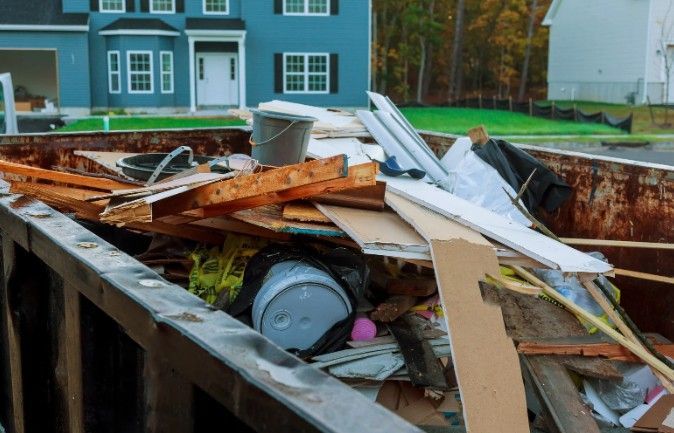Benefits of Warehouse Cleanouts Augusta Explained
When clutter and unused materials start to pile up, a warehouse begins to lose its intended function. Space that was meant for storage, shipping, or inventory turns into a maze of outdated equipment, broken pallets, and forgotten products. Cleanouts help businesses recapture this lost square footage, giving them the ability to utilize every inch of their property more effectively.
With more open space, warehouses can improve traffic flow for forklifts, streamline operations, and even delay expensive expansion plans. Think of it as hitting a reset button on your warehouse layout. Once the clutter is removed, it becomes much easier to rethink shelving arrangements, designate zones, and introduce leaner workflows. In fast-paced industries where time is money, every extra foot of clear floor counts. A well-timed cleanout restores order and makes room for what actually drives revenue: efficiency.
Boosting Productivity Across Departments
A disorganized warehouse doesn’t just look bad—it actively drags down performance. When employees waste minutes (or hours) searching through clutter for materials or tools, those delays accumulate into real operational losses. Warehouse cleanouts help eliminate those barriers by creating a more functional and accessible environment. Teams can focus more on their tasks and less on navigating chaos. It's not only about physical space; mental clarity improves when people work in tidy surroundings.
A cleanout sparks morale, energizes staff, and makes daily processes smoother. Employees will be able to locate inventory faster, handle goods more safely, and reduce missteps. Time spent managing junk is time stolen from your core mission. By resetting the work environment through a professional cleanout, companies can achieve measurable gains in output and accuracy—outcomes that ripple through departments from inventory to logistics.
Enhancing Safety for All Workers
Warehouses are already loaded with safety concerns: heavy equipment, high shelving, and fast-paced movement. Adding clutter only amplifies those hazards. Pallets blocking exits, boxes stacked precariously, and random spills from aging containers turn work zones into injury zones. A proper cleanout strips away these lurking threats and helps bring the facility back into compliance with safety regulations. Clear walkways and properly stored materials drastically lower the risk of trips, falls, or equipment accidents.
Furthermore, during a cleanout, many businesses uncover potential issues they hadn’t noticed—leaks, mold, pest infestations—that could be quietly endangering their workforce. Mitigating these risks now could prevent medical costs, lawsuits, or worse down the line. Safety isn’t just about rules; it’s about the well-being of the people who power your operations every day. A clean warehouse is a safer one, and investing in that safety pays dividends in morale and liability reduction.

Streamlining Inventory Management
Trying to manage inventory in a cluttered warehouse is like juggling blindfolded. No one can do it effectively. When unused equipment, unsorted returns, or discarded packaging materials start to dominate storage areas, visibility into active inventory plummets. Cleanouts bring order back into the system. With a fresh start, businesses can implement smarter storage solutions, label more clearly, and take accurate stock counts.
Even better, identifying and discarding obsolete inventory during a cleanout helps refine purchasing decisions and reduce waste. Operations can better forecast needs when the picture isn’t blurred by unnecessary items. Employees regain confidence in their ability to locate and manage inventory, improving customer satisfaction due to fewer backorders or delays. In an industry where precision matters, cleanouts restore the clarity that inventory teams desperately need. They transform a messy guessing game into a data-driven workflow.
Improving Environmental Responsibility
Disposing of warehouse waste isn’t just about throwing things away—it’s about how you do it. A structured warehouse cleanout often includes environmentally responsible sorting and recycling of materials. From wooden pallets to outdated electronics, many discarded items can be diverted from landfills. By partnering with licensed haulers and disposal experts, companies take steps toward greener operations. Environmental responsibility is more than a buzzword; it’s becoming an operational expectation.
Whether to comply with local regulations or simply align with sustainability goals, cleanouts give businesses a chance to make a measurable environmental impact. Responsible disposal helps reduce carbon footprints, avoid fines, and even boost brand reputation. Today’s customers and partners are watching how companies handle waste, and a cleanout that emphasizes sustainability is a smart, proactive move that reflects long-term thinking.
Preparing for Growth and Expansion
If your warehouse is bursting at the seams, expansion may be on the horizon. But before jumping into costly construction or new leases, a cleanout offers a practical step. Often, what seems like a space issue is actually a clutter problem. By thoroughly clearing out unused inventory, outdated machinery, or excess materials, companies discover that they already have the room they thought they needed elsewhere.
Cleanouts can serve as a diagnostic tool—showing whether growth requires new square footage or just better use of current space. For businesses looking to scale, having a clean, organized foundation is critical. It sets the stage for integrating new systems, automation, or additional staff. Without first decluttering, expansion efforts can turn chaotic fast. A cleanout isn’t just reactive; it’s strategic. It clears the deck for the future while maximizing present resources.
Strengthening Compliance and Inspections
Warehouses are subject to multiple layers of regulation, from OSHA standards to fire codes. Failing an inspection due to clutter is an expensive and easily avoidable mistake. Cleanouts serve as a crucial step in maintaining compliance. They offer a fresh opportunity to address improper storage, blocked emergency exits, or expired materials. More importantly, they create a standard for ongoing housekeeping that can make surprise audits less stressful.
Regulatory compliance is not just about avoiding penalties—it’s also a mark of professionalism and operational discipline. Cleanouts help identify risks that can be corrected before they become violations. Inspections become faster, smoother, and less disruptive when warehouses are clean and well-ordered. It’s not about putting on a good face for inspectors—it’s about running a facility that’s always ready to meet the highest standards of safety and efficiency.
Reducing Costs Through Efficiency
Inefficiency can silently drain a company’s profits in numerous ways, often going unnoticed until it’s too late. Misplaced goods, delayed shipments, and the need for overtime pay due to workers navigating cluttered aisles are just a few examples of how disorganization leads to unnecessary expenses. A comprehensive warehouse cleanout serves as a powerful solution to combat these inefficiencies. By clearing out clutter and optimizing the workspace, companies can streamline their workflows, enabling employees to complete routine tasks faster and with fewer interruptions. This boost in productivity means labor costs decrease as workers spend less time searching for items or maneuvering around obstacles. Furthermore, equipment functions more reliably without frequent disruptions caused by disorganized spaces.
Beyond improving workflow, removing unused or obsolete inventory can lead to significant savings on storage costs. Some businesses may even find opportunities to downsize their warehouse space, lowering rent and utility expenses. Overall, a well-executed cleanout empowers management to regain control over operational costs, driving tangible savings not only in physical space but also in time, energy, and resources. The initial investment in a thorough warehouse cleanout quickly pays off through improved efficiency and reduced expenses across all departments.
Increasing Equipment Lifespan
Heavy machinery and material-handling equipment like forklifts thrive in clean, obstacle-free environments. Cluttered warehouses can lead to frequent accidents, inefficient usage, and faster wear and tear. When employees are forced to maneuver around junk or misplace tools due to disorganization, equipment usage becomes sloppy and rushed. Cleanouts help optimize traffic lanes, keep loading zones accessible, and provide the breathing room necessary for safe and proper operation of all warehouse machinery.
This indirectly extends the lifespan of equipment and reduces repair or replacement costs. Furthermore, during cleanouts, it becomes easier to assess the condition of seldom-used machinery and decide whether it should be repaired, maintained, or discarded. Keeping the workspace clean means keeping your tools in better shape. In an environment where industrial equipment is a major investment, cleanouts protect that value long-term.
Making a Stronger First Impression
Your warehouse isn’t just a behind-the-scenes facility—it often serves as a physical representation of your brand. Vendors, partners, and clients who step inside form instant judgments based on what they see. A messy, disorganized space may suggest carelessness, inefficiency, or even instability. In contrast, a well-maintained warehouse conveys professionalism and control.
A cleanout helps companies reset that impression by presenting a tidy, organized, and well-functioning operation. This matters more than many businesses realize. Whether you're recruiting new talent, hosting site visits, or pitching to investors, appearances matter. Cleanouts transform cluttered chaos into a space that inspires confidence. When visitors see streamlined shelves, clear floors, and active operations, they see a company that takes pride in its infrastructure. And that pride carries weight in every interaction.
Conclusion
No warehouse operates perfectly forever, but every warehouse can benefit from a fresh start. A thorough, strategic cleanout goes beyond a simple one-time cleanup—it represents a commitment to enhancing operational clarity, improving safety, and fostering growth. The benefits of a clean and organized warehouse extend well beyond aesthetics, including increased worker productivity and ensuring compliance with important regulations.
If your Augusta warehouse is overdue for a transformation, now is the perfect time to take action. Let the professionals at Hinkins Disposal handle the heavy lifting, sorting, and hauling, allowing you to focus on what truly matters—running your business efficiently and with purpose. Offering reliable, eco-conscious, and timely cleanout services, Hinkins Disposal is ready to help you reclaim your space and restore order. Located in Augusta, GA, you can reach them by phone at (706) 885-4032 or by email at Hinkinsdisposal@gmail.com. Trust their expertise to give your warehouse the fresh start it deserves.




